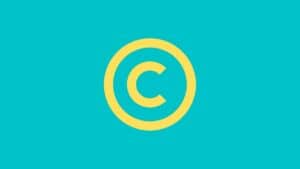Introduction
Once an individual has completed work and gets it registered for copyright at the copyright office in the United States, the owner of the work derives various rights for his work, including reproduction of the work, displaying the work in the public for monetary purposes, creating derivatives of the work, etc. These rights are inherited because of the authorship and original nature of the work, and no other individual can enjoy these rights unless the owner licenses the rights through Copyright Licensing. This article will see what copyright licensing is and how it exists in the United States.
What is Copyright Licensing?
Copyright licensing is the concept of transferring one’s right on their work to other individuals who are not the original creator of the work. Once the work is created, the next step that the owner of the work wants is to monetize the efforts they put into the creation of the work. Not all owner of the work can effectively sell their work on their own or ripe all the potential profit that they can get from their work.
In such cases, copyright licensing comes into play. The owner of the work makes profits by transferring their work to other people who either give them royalty or lump sum money depending on the terms and conditions of the contract they have entered into.
For example – When an author has written a book and a business (the publishing company) wants to publish copies of the work to sell it in the market. The author may agree to license the production company to reproduce the copies of his original work, and for that, he may take a royalty on each copy sold or a lump sum money from the production company. This also makes it easy for the author to focus on his talent and write more books rather than creating money from his previous work.
Types of Copyright Licenses
Voluntary Copyright License
The term voluntary itself suggests that the copyright owner wants to come into a contract of copyright license by their wish. Voluntary contracts are used to earn money. In most cases, the copyright owner and the licensee negotiate a fee for using the copyrighted work and come into a contract according to agreed-upon terms and conditions. Voluntary licenses are also called direct licenses. The contract is generally in the written form and stipulates unto what extent the rights are granted, what rights are granted, the terms of the license, and the royalties, if any, to be paid to the copyright owner.
Implied Licenses
An implied license can be created by law if there is no paper-based contract between the parties; however, the parties’ actions suggest that a copyright license is created between the copyright owner and the licensee. This can be determined if the licensee is using the rights on the original work and the owner does not have any problem despite knowing the fact and maybe taking money from the licensee.
The goal of an implied license is to give the licensee (the party who buys the copyrighted work from the copyright owner) some rights to use the copyrighted work but only to the amount that the copyright owner would have authorized if the parties had negotiated a deal. When it comes to dispute, it is always hard for the copyright owner to prove the extent of the rights that are transferred in case of abuse of copyrighted work by the licensee as there is no document present, and therefore it is in the interest of the copyright owner to always enter into a contract that is in written form.
Compulsory Licensing
The United States Congress has established that the government should determine the terms, conditions, and fees for a restricted class of copyright licenses. This happens if any public policy regulates the license of certain classes of copyright work or in certain limited circumstances. Compulsory licensing is also called statutory licensing. In compulsory/statutory licensing cases, the fee is usually paid per the rate set by law.
The Licensing Division is in charge of assisting with the administration of various statutory licenses and similar provisions, such as secondary transmissions of radio and television programs by cable and satellite systems, the production and distribution of phonorecords of nondramatic musical works, and the importation, manufacture, and distribution of digital audio recording devices or media. Non-interactive webcasting or Internet radio is the most popular usage authorized by these statutory licenses.
Conclusion
We hope that this guide has provided you with insight into copyright licensing. If you are the work owner and want to license the work, you can contact us to create a contract for you. If you have any other questions about copyright licensing or any other intellectual property rights topic, drop your questions to us. Our experienced team will be delighted to help you.




 by Prozco®
by Prozco®